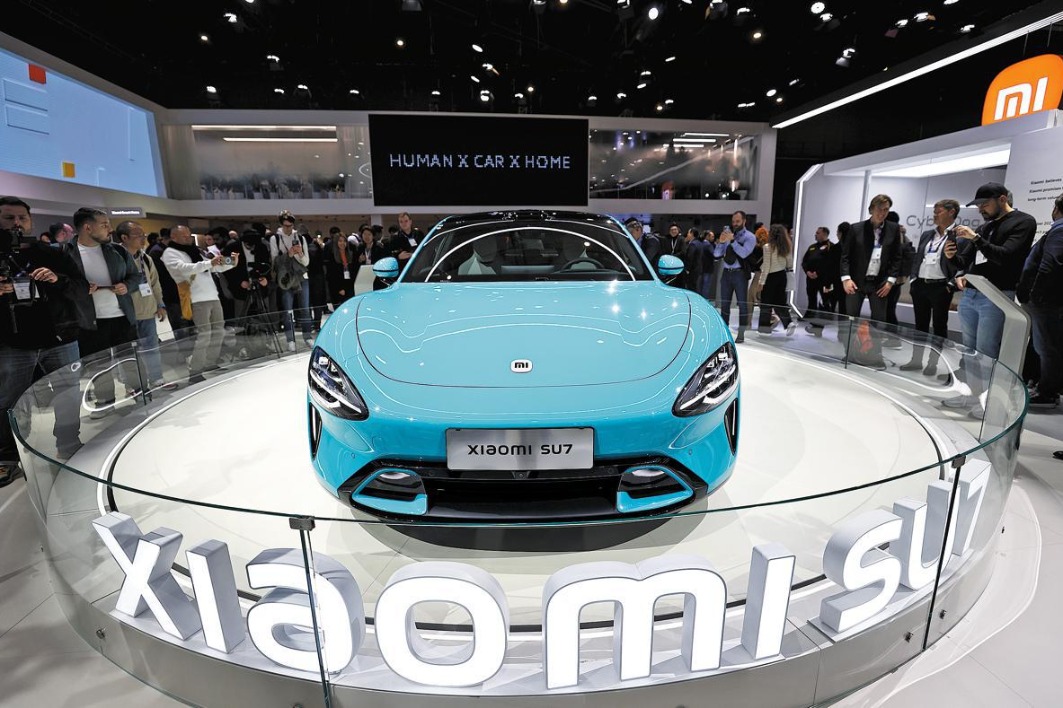Xiaomi, one of the world’s largest smartphone manufacturers, has entered the electric vehicle market with a model that costs less than half the price of electric vehicles (EVs) offered by Tesla of the US and Porsche of Germany, but offers better performance than these prestigious brands.
Xiaomi CEO Lei Jun, who dreams of a “dream car”, spoke highly of his company’s first electric vehicle, the SU7, at an event in Beijing on 28 March.
The Max, the top model in the SU7 family, has a range of 800 kilometres and a top speed of 265 kilometres per hour, meaning it can go further and faster than rivals Porsche Taycan and Tesla Model S. It accelerates to 100 kilometres in 2.78 seconds, faster than German and American cars.
While Apple in the US has cancelled the Apple Car project, Xiaomi has made a bold move.
The SU7 Max is also attractively priced at 698,900 yuan ($698,900), compared to 1,518,000 yuan for Tesla and 299,900 yuan ($41,500) for Porsche.
Just five years after its founding, Xiaomi has become a leading smartphone maker, selling phones with specs comparable to Apple’s iPhone for less than half the price.
Then, in March 2021, Xiaomi announced its entry into the electric vehicle business, pledging to spend $10 billion on research and development over 10 years. Partnering with Beijing Automobile Works Group on production, Xiaomi has launched new electric vehicles in just three years, outpacing its more experienced competitors in many ways. Lei says Xiaomi will become “one of the world’s top five car brands in 15 to 20 years”.
Xiaomi entered the electric car market with a high-performance model, adopting the strategy of Tesla and other emerging electric car makers: win over drivers who want superior performance, then move into the mass market of cheaper cars. Xiaomi says it received more than 50,000 pre-orders for the SU7, short for Speed Ultra 7, within 27 minutes of its launch.
Lei said Xiaomi will offer products in “all categories of electric vehicles” and is developing new vehicles, and said the company has more models in the pipeline.
The SU7 is said to be Xiaomi’s attempt to develop a high-performance electric vehicle with its own technologies, some of which are more advanced than those of its rivals, while using some technologies developed by Tesla and China’s BYD Auto.
The Chinese company also plans to build an “Xiaomi sphere” that will bring its technological ecosystem to every corner of modern life by connecting its electric vehicles to smartphones and home appliances.
By incorporating the HyperOS operating system used in smartphones, home appliances and devices into the SU7, Xiaomi may be trying to monetise its tech ecosystem: It will offer services by connecting the vehicle to other devices, according to Fukao.
Sanshiro Fukao, a senior research fellow at Itochu Research Institute, said that most of its customers’ daily activities will be connected to this ecosystem in some way through more than 200 devices, including the SU7. The electric vehicle is at the heart of the expansion of Xiaomi’s space. “Xiaomi is launching services that Apple might want to offer,” he said.
Xiaomi stands out from other new EV makers in that it already has a large customer base as a top global smartphone maker. Xiaomi shipped 145 million smartphones worldwide last year, making it the No. 3 maker behind Apple and South Korea’s Samsung Electronics, according to US research firm IDC.
In the fiscal year to December, Xiaomi posted revenue of 270.9 billion yuan ($37 billion). That makes it a much bigger company than Suzuki Motor, which had sales of 4.6 trillion yuan ($30 billion) in the year to 31 March.
Analysts attribute Xiaomi’s rapid growth to the Mi Fan Club. Lei’s “For Fans Only” philosophy has earned the company a huge following on social media. The company hosts events for these fans, many of whom it hopes will want to get behind the wheel of a Xiaomi EV.
At the SU7 launch event in Beijing, Lei said Xiaomi would support Apple’s CarPlay, iPad and other Apple products, underlining that the Chinese company understands its place in the US tech giant’s scheme of things. In other words, Xiaomi wants to attract users of Apple products with its electric vehicles.
While Tesla is trying to combine electric vehicles and renewable energy, Xiaomi is trying to integrate the data generated by people’s lives. Lei said Xiaomi will complete the “people-car-home smart ecosystem”.


 OPINION1 week ago
OPINION1 week ago
 DIPLOMACY7 days ago
DIPLOMACY7 days ago
 ASIA6 days ago
ASIA6 days ago
 AMERICA2 weeks ago
AMERICA2 weeks ago
 MIDDLE EAST1 week ago
MIDDLE EAST1 week ago
 DIPLOMACY3 days ago
DIPLOMACY3 days ago
 AMERICA2 weeks ago
AMERICA2 weeks ago
 MIDDLE EAST5 days ago
MIDDLE EAST5 days ago



















